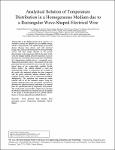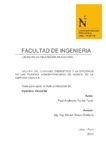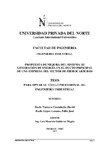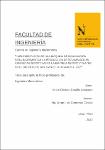Mostrar el registro sencillo del ítem
Analytical solution of temperature distribution in a homogeneous medium due to a rectangular wave-shaped electrical wire [Solución analítica de la distribución de temperaturas en un medio homogéneo debido a un cable eléctrico con forma de onda rectangular]
| dc.contributor.author | Diestra Cruz, Heberth Alexander | |
| dc.contributor.author | Brunet, Melanie A. | |
| dc.contributor.author | Santos-Sánchez, Melvin | |
| dc.contributor.author | Alvarez-Herrera, Paul | |
| dc.contributor.author | Quevedo-Novoa, Guillermo | |
| dc.date.accessioned | 2021-06-17T01:56:49Z | |
| dc.date.available | 2021-06-17T01:56:49Z | |
| dc.date.issued | 2020-09-15 | |
| dc.identifier.citation | Diestra, H. ...[et al]. (2020). Analytical solution of temperature distribution in a homogeneous medium due to a rectangular wave-shaped electrical wire [Solución analítica de la distribución de temperaturas en un medio homogéneo debido a un cable eléctrico con forma de onda rectangular]. Proceedings of the LACCEI International Multi-conference for Engineering, Education and Technology, (612). https://doi.org/10.18687/LACCEI2020.1.1.612 | es_PE |
| dc.identifier.uri | https://hdl.handle.net/11537/26867 | |
| dc.description.abstract | RESUMEN Debido a la limitada cantidad de reservas de petróleo, es fundamental garantizar el uso eficiente de la energía disponible, lo cual está íntimamente ligado al diseño óptimo de los equipos eléctricos. Estos equipos (por funcionar con energía eléctrica) no pueden evitar tener fuentes discretas de generación de calor y su diseño depende de la determinación precisa del campo de temperaturas en todo el cuerpo. En este trabajo se utiliza el método integral de las funciones de Green para determinar la distribución de temperaturas tridimensional de un medio homogéneo debido a una fuente de generación de calor con forma de onda rectangular. La geometría de la generación de calor ha sido seleccionada de tal manera que tenga la forma típica de los calentadores eléctricos flexibles que se encuentran comercialmente disponibles. La solución obtenida es exacta y matemáticamente simple. Para demostrar la versatilidad de los resultados, esta solución analítica ha sido comparada con la solución puramente numérica obtenida usando un paquete computacional de amplio uso en ingeniería (COMSOL Multiphysics). Los resultados analíticos y numéricos coinciden en todos los rangos evaluados. Usando la ecuación obtenida en este trabajo, se propone un procedimiento sencillo para determinar la conductividad térmica efectiva de un material a partir de los datos experimentales de temperatura y posición. Los resultados de esta investigación pueden ser aplicados en el diseño de dispositivos termo-ópticos, calentadores eléctricos flexibles o dispositivos microfluídicos termo-regulables y ofrecen un método conveniente para obtener la conductividad térmica efectiva de un material. Palabras | es_PE |
| dc.description.abstract | ABSTRACT Due to the limited amount of oil reserves, it is essential to ensure the efficient use of available energy, which is closely linked to the optimal design of electrical devices. Because these devices work with electrical energy, they cannot avoid having discrete heat generating sources and their design depends on the precise determination of the temperature field in the body. In this work, the integral method of Green's functions is used to determine the three-dimensional temperature distribution of a homogeneous medium due to a rectangular waveshaped heat generation source. The geometry of the heat generation has been selected in such a way that it has the typical shape of the commercially available flexible electric heaters. The solution obtained is exact and mathematically simple. To demonstrate the versatility of the results, this analytical solution has been compared with the purely numerical solution obtained using a computer package widely used in engineering (COMSOL Multiphysics). The analytical and numerical results coincide well in all the evaluated ranges. Using the equation obtained in this work, a procedure is proposed to determine the effective thermal conductivity of a material from the experimental data of temperature and position. The results of this research offer a simple way to calculate the thermal conductivity of a material and can be applied in the design of thermo-optical devices, flexible electric heaters or thermo-adjustable microfluidic devices. | es_PE |
| dc.format | application/pdf | es_PE |
| dc.language.iso | spa | es_PE |
| dc.publisher | LACCEI | es_PE |
| dc.rights | info:eu-repo/semantics/openAccess | es_PE |
| dc.rights | Atribución-NoComercial-CompartirIgual 3.0 Estados Unidos de América | * |
| dc.rights.uri | https://creativecommons.org/licenses/by-nc-sa/3.0/us/ | * |
| dc.source | Universidad Privada del Norte | es_PE |
| dc.source | Repositorio Institucional - UPN | es_PE |
| dc.subject | Transferencia de calor | es_PE |
| dc.subject | Temperatura | es_PE |
| dc.subject | Energía eléctrica | es_PE |
| dc.title | Analytical solution of temperature distribution in a homogeneous medium due to a rectangular wave-shaped electrical wire [Solución analítica de la distribución de temperaturas en un medio homogéneo debido a un cable eléctrico con forma de onda rectangular] | es_PE |
| dc.type | info:eu-repo/semantics/conferenceObject | es_PE |
| dc.publisher.country | US | es_PE |
| dc.identifier.journal | Proceedings of the LACCEI International Multi-conference for Engineering, Education and Technology | es_PE |
| dc.description.peer-review | Revisión por pares | es_PE |
| dc.subject.ocde | https://purl.org/pe-repo/ocde/ford#2.01.01 | es_PE |
| dc.description.sede | Trujillo San Isidro | es_PE |
| dc.identifier.doi | https://doi.org/10.18687/LACCEI2020.1.1.612 |







